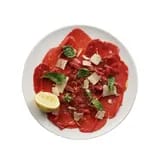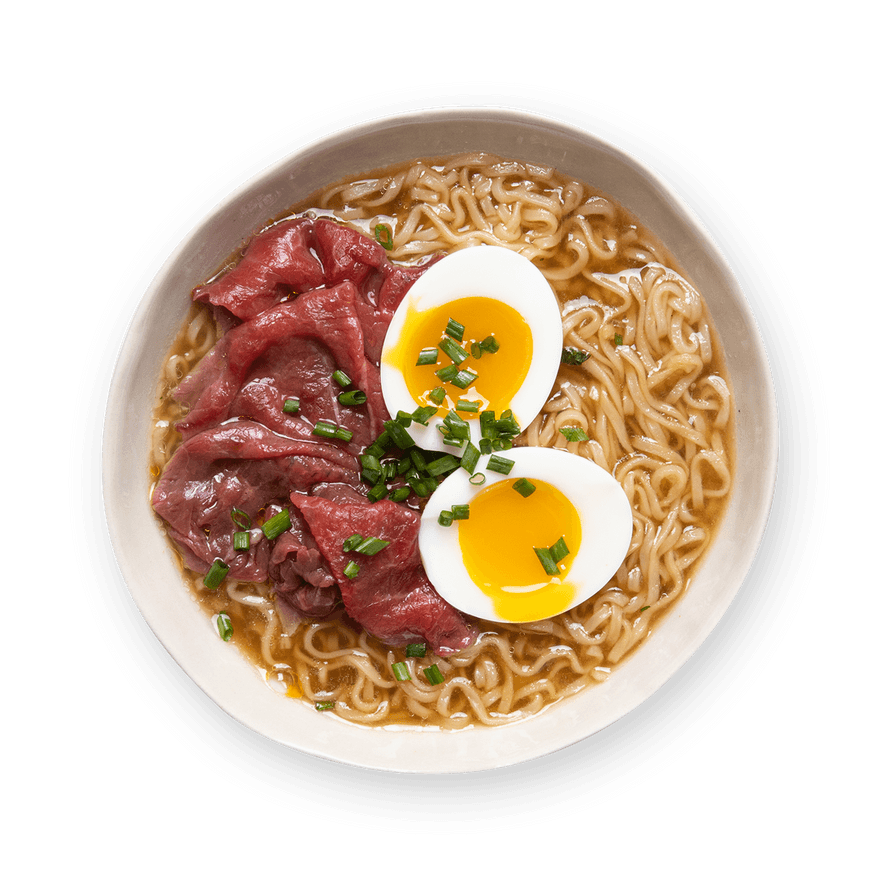Ingredients
Make sure you have...
Utensils
Stovetop, Pot (small)
recipe

Step 1
Cook the eggs in a pot of boiling water for 6 minutes. Once cooked, plunge them into a bowl of cold water to stop them from cooking further.

Step 2
Meanwhile, in a second pot, bring 200 ml of water per person to a boil. Add the instant noodles & cook according to package instructions.
Step 3
Once cooled down, remove the eggshells. Rinse the eggs in water & slice them in half.

Step 4
Serve the noodle broth in a bowl with the soy sauce (optional, if using the flavor packet) & the flavor packet. Stir.


Step 5
Add the slices of beef carpaccio & the runny egg & top with minced chives, if you have some.* Enjoy ! *Check out our tips for this step
For a truly flavoursome dish, we suggest adding some fried mushroom, carrots & shallots to your ramen soup.
Un client astucieux
Personal notes
Add your own flavor!
Nutrition facts
Average estimated amount for one serving
| Energy | 461 cal. |
| Fat | 10 g |
| Carbohydrates | 61 g |
| Protein | 30 g |
| Fiber | 4 g |
Values are based on an average estimate for one serving. All nutrition information presented on Jow is intended for informational purposes only. If you have any concerns or questions about your health, please consult with a health-care professional.
On average, one serving of the recipe "Ramen Soup with Beef" contains 461 Energy, 10 g of Fat, 61 g of Carbohydrates, 30 g of Protein, 4 g of Fiber.
Price per portion
| € | Nos recettes à -2 € par portion |
| €€ | Nos recettes entre 2 € et 4 € par portion |
| €€€ | Nos recettes à +4 € par portion |
Please note, the price above is dependent on your grocer and the available products in the grocery store you chose.
Scores


C Nutri-score
The Nutri-score is an indicator intended for understanding nutritional information. Recipes or products are classified from A to E according to their food composition to promote (fiber, proteins, fruits, vegetables, legumes, etc.) and foods to limit (energy, saturated fatty acids, sugars, salt, etc.).
D Green-score
The Green-score is an indicator representing the environmental impact of food products. The recipes or products are classified from A+ to F. It takes into account several factors on the pollution of air, water, oceans, soil, as well as the impacts on the biosphere. These impacts are studied throughout the product life cycle.
Retrieving reviews...



